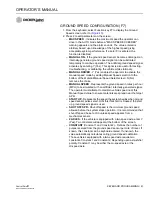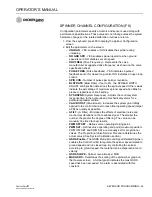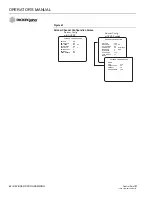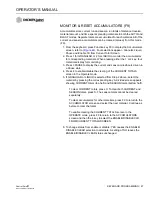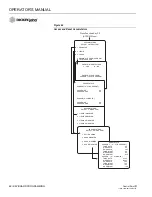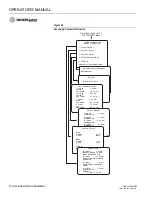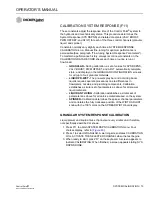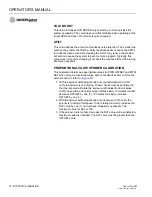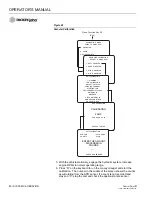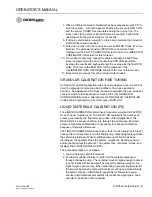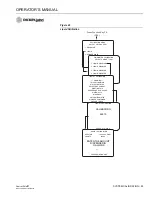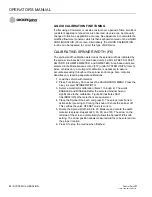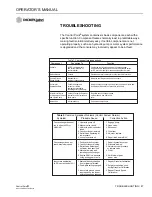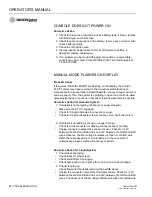
OPERATOR’S MANUAL
Control Point
®
11001-1489-201702 Rev B
SYSTEM CALIBRATION / 73
SYSTEM CALIBRATION
Due to the many combinations of hydraulic/liquid pumps, valves and motors
plus the different material delivery systems, each spreader truck becomes
unique. System calibration defines the spreader configuration
characteristics for optimum accuracy of the Control Point
®
system.
Performing the following procedures in the order outlined ensures the
greatest accuracy when finished.
RECORDING CALIBRATION DATA
After finishing each routine, record the calibration constant on the
CALIBRATION DATA RECORD sheets at the rear of this manual. If console
replacement becomes necessary, most system parameters can be quickly
transferred to the new unit via wireless transfer (Control Point
®
version 7.27
or higher with wireless base station) or keyboard entry.
If additional sheets are required, make copies and keep them with this
manual.
REPEATING CALIBRATION RUNS
To minimize operator and other procedural errors, most tests should be
repeated several times (three times), average the results, and keyboard
enter the constants. The SYSTEM RESPONSE CALIBRATION does not
require repeating.
MAINTAINING CALIBRATION ACCURACY
The below conditions should be followed to maintain accurate system
calibration.
1. If a new material is added and the spreader, nozzle, or flowmeter
constant is not accurately known, the GRANULAR or LIQUID
CALIBRATION routine must be run.
2. If wear of the conveyor/auger mechanism, actuator valves, flowmeter,
nozzles, or other system components is suspected, a new catch test
(GRANULAR or LIQUID CALIBRATION) should be performed to
re-establish APR accuracy.
3. After installing new or different tires, the GROUND SPEED
CALIBRATION should be repeated.
4. Each known physical (mechanical) change in the system should be
followed immediately by a SYSTEM RESPONSE calibration on the
related control channel (granular, liquid pre-wet, liquid anti-ice, or
spinner).
5. Repair or replacement of any system components, including hydraulic
hoses, fluid changes and even normal wear, make it necessary to
periodically recalibrate the system.
6. Even without known changes, the SYSTEM RESPONSE
CALIBRATIONS should be performed at minimum intervals of one
year. A good rule of thumb is to recalibrate all three control channels at
the start of each spreader season.
Summary of Contents for Control Point
Page 1: ...CONTROL POINT CONTROL SYSTEM Operator s Manual SINCE 1966 ...
Page 5: ...OPERATOR S MANUAL Control Point 11001 1489 201702 Rev B IV ...
Page 7: ...OPERATOR S MANUAL Control Point 11001 1489 201702 Rev B 2 SAFETY NOTICES ...
Page 13: ...OPERATOR S MANUAL Control Point 11001 1489 201702 Rev B 8 INTRODUCTION ...
Page 29: ...OPERATOR S MANUAL Control Point 11001 1489 201702 Rev B 24 START UP AND FAMILIARIZATION ...
Page 77: ...OPERATOR S MANUAL Control Point 11001 1489 201702 Rev B 72 KEYBOARD PROGRAMMING ...
Page 79: ...OPERATOR S MANUAL Control Point 11001 1489 201702 Rev B 74 SYSTEM CALIBRATION ...
Page 91: ...OPERATOR S MANUAL Control Point 11001 1489 201702 Rev B 86 SYSTEM CALIBRATION ...



